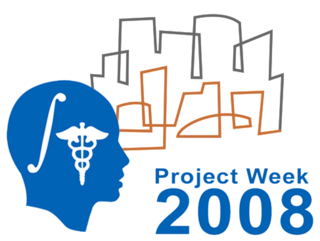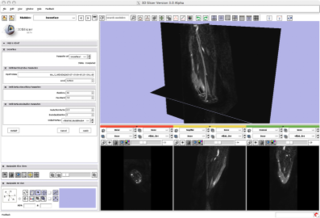NA-MIC/Projects/External Collaboration/Slicer3-vmtk Integration
 Return to Project Week Main Page |
Key Investigators
- Mario Negri Institute, University of Verona: Luca Antiga
Objective
To create a Slicer-based platform for segmentation of vascular segments from angiographic images (CTA, MRA, ...), analysis of vascular geometry, mesh generation, computational hemodynamics (CFD) and visualization.
Approach, Plan
To integrate vmtk scripts within Slicer as command-line modules for the non-interactive tasks, and to create ad-hoc GUI modules for the more interactive tasks (i.e. segmentation).
The plan for the project week is to finalize the implementation of an interactive LevelSetSegment module that replicates (and improves) the interactive segmentation tool currently in vmtk. Tentatively, LevelSetSegment will be a Python Scripted Module.
Progress
During project weeks last year (see 2007 Project Week at MIT), automated conversion of vmtk script pipes to Slicer command-line modules has been implemented.
References
- vmtk.sourceforge.net
- Lee SW, Antiga L, Spence JD and Steinman DA. Geometry of the carotid bifurcation predicts its exposure to disturbed flow. Stroke. Accepted.
- Thomas JB, Antiga L, Che S, Milner JS, Hangan Steinman DA, Spence JD, Rutt BK and Steinman DA. Variation in the carotid bifurcation geometry of young vs. older adults: Implications for "geometric risk" of atherosclerosis. Stroke, 36(11): 2450-2456, Nov 2005.
- Antiga L, Steinman DA. Robust and objective decomposition and mapping of bifurcating vessels. IEEE Transactions on Medical Imaging, 23(6): 704-713, June 2004.
- Antiga L, Ene-Iordache B and Remuzzi A. Computational geometry for patient-specific reconstruction and meshing of blood vessels from MR and CT angiography. IEEE Transactions on Medical Imaging, 22(5): 674-684, May 2003.
